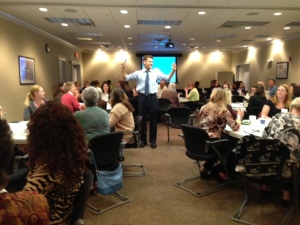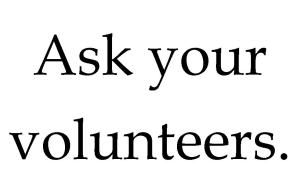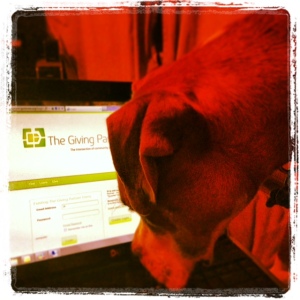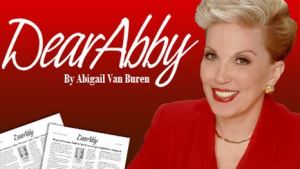3 Ways Nik Wallenda Can Inspire Us for the Giving Challenge
January 29, 2013
In just a few moments, the tightrope walker we’ve all come to know and love, Nik Wallenda, will walk on a wire 200 feet over one of the busiest roads in Sarasota without a safety harness.
Are you holding your breath?
Naturally, we have to use every opportunity to draw links between exciting events in the world and our upcoming 36-Hour Giving Challenge, so here you go. Let’s look at what Nik can teach us as we get ready to embark on a community-wide giving campaign:
- For whatever reason, we’re all enchanted by risk-taking.
The 36-Hour Giving Challenge is just that—a Challenge. We’re not distributing equal grant checks to participating organizations; we’re asking each organization to use the resources at its disposal—volunteers, social networking, donor engagement, creativity, and above all else, strategy—to go for it. By nature, people will be excited by the fact that you’re participating. So make the most of it. Whatever organizational goal you have set for yourself—whether it’s small or large—put your all into getting there. - People like “live.”
Though many of us working people will be watching the walk on rewind during the evening news, the most coveted way to view it is down at the site itself or on the live webcam. Think about how you will bring your audience to you during the Giving Challenge. On your website, through social media or expressed in appreciative calls to donors, give us a little taste of what it’s like to be at the “mission control” of your organization. Share photos of your team up at the crack of dawn, late at night, standing by the leaderboard, working with clients that day, etc. Bring people into your moment and make them part of it. - Our community loves to see Southwest Florida basking in the national spotlight.
People visit and winter in our community from all over the world, and our community has an identity we’re proud of. We like the Universe to know who we are, and where we are on the green and blue sphere of our globe. We have a thriving arts community. We have the world’s best beach. And we have some people, like you, who are 150% committed to making their causes shine in the biggest way possible. Let’s take this opportunity to do it.
I’ll feel better once Nik has made it safely across. Similarly, after the Giving Challenge is over, I know we’ll all sit back and admire the results. In both cases, what’s more exciting, though? Reflection after the fact, or enjoying the thrilling journey across? Something to think about…
-Susie Bowie
Community Foundation of Sarasota County
The importance of thanking donors, quickly and often.
January 28, 2013
Anyone who has experienced success in fundraising–and the profound responsibility of stewarding generous donors–knows that gratitude is everything.
Whether or not your donors crave public recognition for their gifts, donors deserve simple but heartfelt appreciation from your organization and confirmation of the difference their gift will make.
Years ago, Kim Klein, founder of the Grassroots Fundraising Journal, came to town. One of my favorite Kleinisms was her quote, “If you don’t have time to thank your donors, you don’t have time for donors.”
I’d like to add the need for urgency in thanking donors–expressing appreciation REALLY soon after they make the gift.
And I have a hunch that Debra Jacobs, president and CEO of The Patterson Foundation, might like to add the importance of thanking your donors in many different ways–perhaps even eight different ways.
Let’s talk about the Giving Challenge for a moment and how you might say thanks.
You can start by assigning someone on your team to be responsible for e-mailing your donors immediately after they give to thank them for their support. Heck, you could even call each one to say thanks. I’m guessing that the delight of hearing an enthusiastic, friendly and appreciative voice on the other end of the phone will offer an unexpected reason to feel great about their decision to give.
If your donor is okay with being publicly recognized, you could thank him/her on Facebook, in your next newsletter (print or e-news), in your next event program, in a special thank you tour of your organization.
Don’t forget that all-important hand-written thank you note. Ask your board members to help you with them. There’s nothing like being appreciated by an organization’s board, and it directly involves your volunteer leaders in the fundraising process without them asking for money.
How many other ways can you think of to say thanks? We have given you seven!
-Susie Bowie
Community Foundation of Sarasota County
P.S. Remember, giving your donors goods or services in exchange for their gifts is not permissible since the gift is 100% tax-deductible.
We’re All in the Communications Business
January 27, 2013
 “We’re all in the business of communications.”
“We’re all in the business of communications.”
It’s the number one message Marc Fest drove home at the packed Message House workshop at the Community Foundation of Sarasota County on Friday.
Our team enjoyed seeing nearly 100 executive directors, program staff, fundraisers and communications professionals who gathered to learn the simple and effective Message House tool—in preparation for the Giving Challenge and for more focused and consistent messages shaping any project, initiative, event, or concept.
Marc stayed to spend some time with the Foundation staff after the workshop to share the tool and brainstorm with us.
Here are five important takeaways from both sessions:
- Always have a seat for communications at the decision-making table, not as an afterthought.
- Good messages are simple.
- Develop messaging with others to help build your team, reach alignment about simple and effective communications, and increase the likelihood that your team will use the messages that are co-created.
- There are two distinct sides of human nature we can appeal to in our messaging.
1. The altruistic side, which looks for the “big picture message” about why your project or appeal makes a difference in the larger scheme of things. This is your emotional, “goose bumps” message.
2. The selfish side, which looks for an answer to “What’s in it for me?” This utility message speaks to the personal gain one can experience from giving money, volunteering, or whatever action you are asking your specific audience to take. - Despite all of our good work and every good intention, there is likely a chief criticism we will have for the initiative or communication we are addressing. Anticipate that from the beginning and pre-empt the criticism with a positive message.
The Giving Challenge is a fertile ground for practicing the Message House concept: inviting communications to the table, appealing to both sides of human nature, developing messaging with others on your team, addressing the critic’s message, and simplifying it all for your audience with a no-brainer action item.
Download the free Message House template here.
Thanks, Marc. Come back to Sarasota soon, and bring Zeus with you next time. So many dog lovers here…
-Susie Bowie
Community Foundation of Sarasota County
New Car Words
January 22, 2013
 Buying a new car is super fun, but it’s an endeavor that requires a little prep.
Buying a new car is super fun, but it’s an endeavor that requires a little prep.
Before you meet your enthusiastic salesman, you might arrive armed with a set of words describing what you are not willing to compromise on with your purchase.
Automatic. Safe. Fuel efficient. Dark seats to cover up inevitable spills.
Are you just as deliberate about choosing a new nonprofit partner?
Let’s face it, you also want a partnership to be fun. It’s more likely to be that way when you know the “new car words” that are right for your nonprofit before you get too far into the exploration.
The best nonprofit collaborations are carefully crafted with those who share similar values, but clearly, that’s not enough. Mutual trust is also a biggie. Clear expectations can be just as important. And the act of partnering itself should make each player more than it could be alone.
We’re hoping your organization will consider working with a business or another nonprofit to build awareness, funding and capacity during the 36-Hour Giving Challenge.
Discover or revisit your “new car words” and use them. It’s a good discussion to have, and one that will help you make a great decision when others approach you as well.
The Giving Challenge can offer the right circumstance for a test drive with a local business or nonprofit you haven’t worked with in the past. Be intentional and then enjoy a smooth drive down the highway of possibilities! It could be the beginning of a beautiful friendship.
-Susie Bowie
Community Foundation of Sarasota County
MLK, Philanthropy and the South
January 21, 2013
On Friday, I was fortunate to be part of a webinar in which Steve Suitts, vice president of the Southern Education Foundation, shared the history of Southern philanthropy.
In the South (yes, Florida is part of the South), we still haven’t caught up with the level of social justice funding that originates from other parts of the country, yet it is arguably the most needed in our region.
Martin Luther King, Jr. said, “Philanthropy is commendable, but it must not cause the philanthropist to overlook the circumstances of economic injustice which make philanthropy necessary.”
Locally, we know that many nonprofits benefit from the incredible generosity of those who care deeply about seniors, children, families and other individuals who need our help.
But is the social sector in our community doing enough to educate donors about the root causes of disparities impacting these populations?
Admittedly, that’s a tough one. We don’t always fully understand these circumstances ourselves. When we do have insights into the tricky web of “what makes philanthropy necessary,” we know that it is bigger than what our organization alone can tackle. It can be political. It’s hard to communicate to donors and stakeholders. We don’t want to overwhelm donors, and we want them to keep our own organization top of mind.
To MLK’s point, we each have a role in talking to philanthropists about the bigger picture, and in listening to them. It’s part of our job as stewards of our missions.
I’ve had the honor of meeting some pretty powerful people in our community who are looking beyond the realm of one organization and one population, and through a lens of big change.
Creating an opportunity for deep conversations with donors is a good way to keep them giving and to benefit from their perspectives when we sometimes get caught up in the day-to-day activities we must carry out to keep services flowing.
A focus on the root causes of economic and social injustice, as well as the outcomes we are all hoping to achieve, is hard work. But it’s doable. We have the right tools–intelligence, experience, compassion and willingness–here in Southwest Florida.
Special thanks to the Southeastern Council on Foundations for offering this webinar as part of the Hull Fellows program.
-Susie Bowie
Community Foundation of Sarasota County
Three Reasons Marc Fest’s “Message House” Concept Rules
January 17, 2013
 On January 25 from 9:00 a.m. to 12:00 p.m., you have an opportunity to attend a free—I repeat, free—session with Marc Fest to learn an incredibly powerful communication tool called The Message House.
On January 25 from 9:00 a.m. to 12:00 p.m., you have an opportunity to attend a free—I repeat, free—session with Marc Fest to learn an incredibly powerful communication tool called The Message House.
It’s timely. When you think about it, the upcoming Giving Challenge is just as much about communications and marketing as it is about fundraising.
Outside of the Challenge, every nonprofit is influenced by a universal truth: good communication or lack thereof can either make or break a leader, a campaign, or a relationship with key nonprofit constituents.
The Message House integrates the important aspects of building any effective communication: the big picture, what’s in it for them (the audience), the most likely criticism, and the action step.
In my conversations with Marc to prepare for this session, it’s pretty obvious that he can quickly apply strategic communication goals to any situation. (Imagine introducing the Giving Challenge to him over an e-mail.)
So here’s why I think the Message House concept rules:
- It is simple, making it easy for anyone to use.
- It works for internal and external audiences.
- It is visual. (“Stay inside the message house and you’ll be safe.”)
One simple action for you: register soon before the spaces fill up. The workshop takes place at the Community Foundation of Sarasota County. Find more information here.
-Susie Bowie
Community Foundation of Sarasota County
Volunteers Really Rock. Will They Rock Your Giving Challenge?
January 16, 2013
 Check out the 2012 Bank of America Study of High Net Worth Individuals, and you will find some discoveries that support what you have hoped about high net worth individuals and giving.
Check out the 2012 Bank of America Study of High Net Worth Individuals, and you will find some discoveries that support what you have hoped about high net worth individuals and giving.
The link between volunteering and giving is especially exciting.
- In 2011, 89% of HNW individuals volunteered, and the most common form was serving as a board member.
- Thirty-five percent of HNW individuals volunteered more than 200 hours.
- In general, HNW individuals who volunteer tend to give to charity more often than those who do not, and HNW individuals who volunteer more tend to give more.
Think of how you can supplement this year’s overall fundraising plan to include volunteers in giving, and be sure to include your volunteer leaders serving on the board and committees.
In the immediate sense, what will your strategy be for sharing the excitement of the 36-Hour Giving Challenge with your volunteers?
Not only may they give, but they may share this opportunity with trusted friends who already know the impact your organization has had on them personally. The likelihood of both is much greater if you ask them to participate and tell them how.
-Susie Bowie
Community Foundation of Sarasota County




